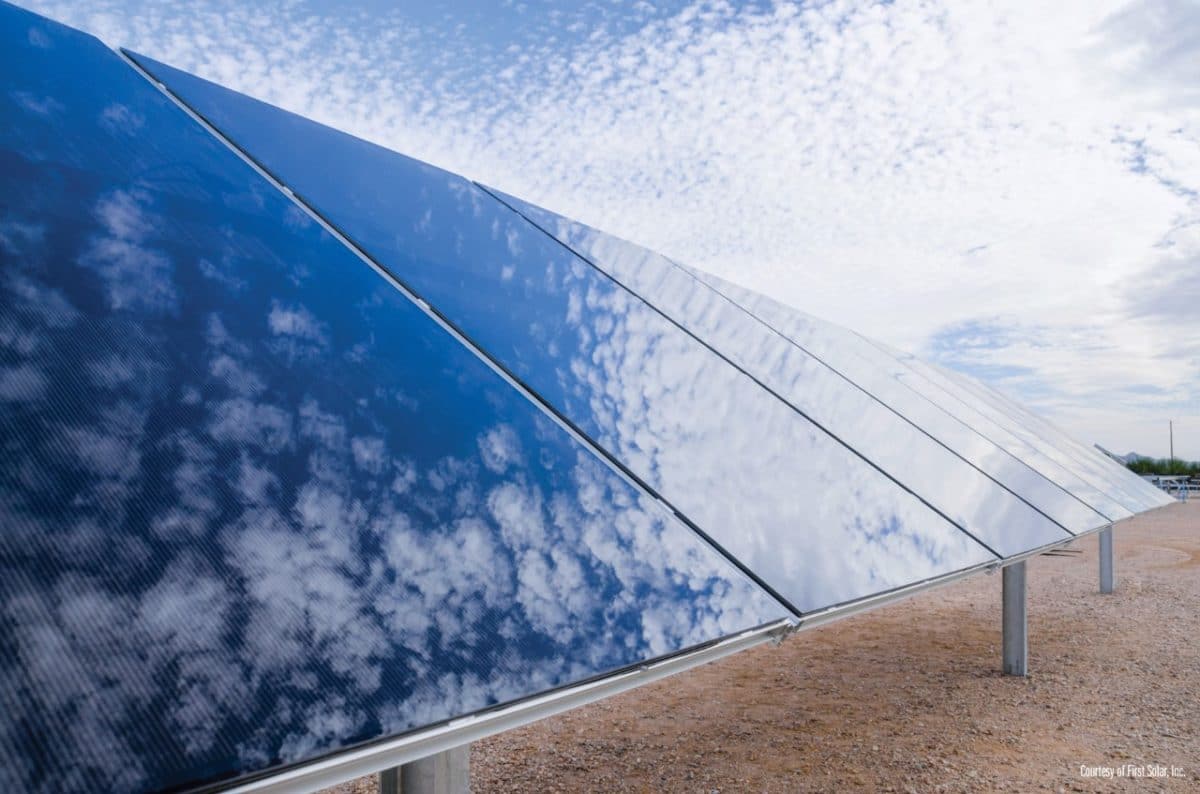Mining group Rio Tinto said it will spend nearly $3 million on a facility to recover tellurium, a critical mineral used in solar panels, from copper refining at its Kennecott mine near Salt Lake City, Utah.
First Solar said it is in talks with Rio Tinto to procure the mineral for its cadmium telluride (CadTel) semiconductor processing in the United States.
The mineral is a byproduct of copper smelting. Rio Tinto said it expects to start production in the fourth quarter, creating a new North American supply for the mineral. The Utah plant will have a capacity to produce around 20 tonnes of tellurium per year.
First Solar uses a layer of CadTel semiconductor that is 3% the thickness of a human hair. It said that CadTel is efficient, cost-competitive, and fast to produce, helping it make its modules in around 4.5 hours. First Solar said that CadTel technology has a carbon footprint that is around 2.5 times lower than crystalline silicon panels.
First Solar sources its CadTel from suppliers in the U.S., Canada, and Europe. It declined to disclose quantities or names of suppliers, but said that Rio Tinto’s supply, if contracted, “could add to existing sources.”
For its part, Rio Tinto is looking to extract more from each rock it mines in order to reduce waste and meet demand for critical minerals.
Tellurium also can be used as an additive to steel and copper to improve machinability, making these metals easier to cut, as well as added to lead to increase resistance to sulfuric acid, vibration, and fatigue.
Kennecott’s smelting process in Utah also recovers gold, silver, lead carbonate, platinum, palladium, and selenium. Elsewhere, Rio Tinto is investing in facilities to extract battery-grade lithium from waste rock at its Boron, California, mine site, and scandium oxide from waste streams at a complex in Sorel-Tracy, Quebec.
This content is protected by copyright and may not be reused. If you want to cooperate with us and would like to reuse some of our content, please contact: editors@pv-magazine.com.









By submitting this form you agree to pv magazine using your data for the purposes of publishing your comment.
Your personal data will only be disclosed or otherwise transmitted to third parties for the purposes of spam filtering or if this is necessary for technical maintenance of the website. Any other transfer to third parties will not take place unless this is justified on the basis of applicable data protection regulations or if pv magazine is legally obliged to do so.
You may revoke this consent at any time with effect for the future, in which case your personal data will be deleted immediately. Otherwise, your data will be deleted if pv magazine has processed your request or the purpose of data storage is fulfilled.
Further information on data privacy can be found in our Data Protection Policy.